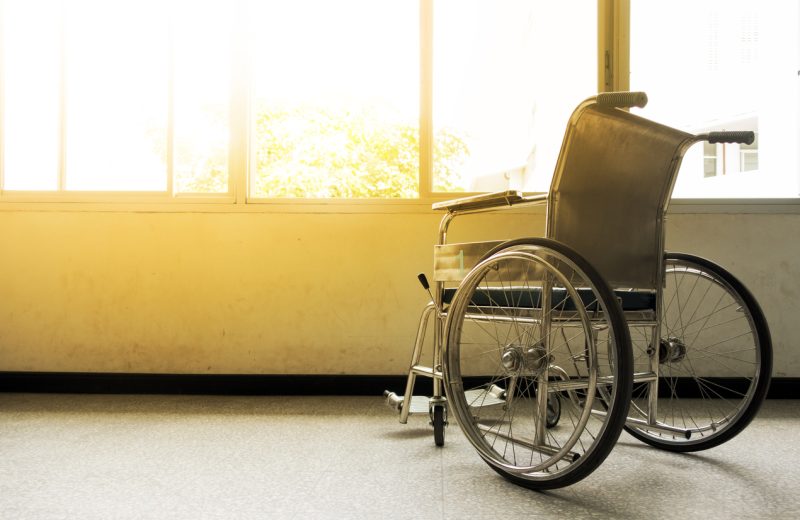May 16, 2025 | Personal Injury

Disabilities impact millions of individuals across the United States, affecting every aspect of their lives, including their ability to maintain employment, enjoy everyday activities, and keep their independence. While the type and the severity of disabilities vary, some are more common than others. Below are the top 10 disabilities reported by the Social Security Administration (SSA).
1. Musculoskeletal Disorders
Musculoskeletal disorders impact the muscles, bones, joints, and connective tissues in the body. Some examples include:
- Arthritis
- Chronic back pain
- Spinal injuries
- Carpal tunnel syndrome
Musculoskeletal injuries and disorders often lead to limited mobility and chronic pain. They’re also a leading cause of workplace injuries, especially in occupations that are more physically demanding.
2. Mental Health Disorders
Mental health conditions can affect mood, cognition, and behavior, and are a common source of disability in the U.S. Some of the most frequently diagnosed include:
- Depression
- Bipolar disorder
- Anxiety disorders
- Schizophrenia
These types of conditions can often interfere with an individual’s ability to work or maintain healthy relationships.
3. Nervous System Disorders
Nervous system disorders influence the brain, spinal cord, and peripheral nerves. Some of the most common examples are:
- Epilepsy
- Multiple sclerosis
- Parkinson’s disease
- Traumatic brain injury (TBI)
TBIs are particularly common and happen frequently in vehicle crashes and can have long-term impacts. Individuals with nervous system disorders could experience seizures, cognitive issues, or mobility limitations.
4. Cardiovascular Conditions
Heart-related conditions can limit physical endurance and increase fatigue. They may include:
- Coronary artery disease
- Stroke
- Heart failure
- Peripheral artery disease
Individuals who have suffered a heart condition may face long-term restrictions on physical activity and need to adjust their lifestyle.
5. Respiratory Disorders
Respiratory illness can make it difficult or impossible to perform normal daily activities or engage in more physical work. Common disabling respiratory conditions include:
- Chronic obstructive pulmonary disease (COPD)
- Asthma
- Pulmonary hypertension
For many kinds of respiratory disorders, supplemental oxygen or other assistive devices may be required to improve breathing function.
6. Cancer
Disabilities related to cancer and treatment side effects may result from:
- Tumor location impairing bodily function
- Fatigue and weakness from chemotherapy or radiation
- Surgical interventions that limit mobility
Cancer-related disabilities can vary widely depending on the type and the stage.
7. Endocrine and Metabolic Disorders
Endocrine and metabolic disorders involve the body’s hormonal systems and metabolism. Diabetes is the most common example, and can lead to complications over time, such as:
- Nerve damage (neuropathy)
- Kidney disease
- Vision loss
- Amputations
Effective management of these conditions is imperative to prevent long-term disability.
8. Intellectual and Developmental Disabilities
Intellectual and developmental disabilities impact learning, problem-solving, and adaptive functioning. Examples may include:
- Autism spectrum disorder
- Down syndrome
- Fragile X syndrome
Birth injuries, delayed treatment, and misdiagnosis during pregnancy can sometimes cause intellectual disabilities. Those with these conditions often require lifelong support with education, employment, and independent living.
9. Hearing and Vision Loss
Sensory impairments involving hearing and vision can impact a variety of daily activities, such as communication, mobility, and even employment. Common causes of these types of conditions are:
- Age-related hearing loss
- Severe vision impairment from glaucoma or macular degeneration
- Complete deafness or blindness
Assistive devices like hearing aids and glasses can help individuals adjust to these types of sensory losses.
10. Injuries Leading to Disability
Traumatic injuries from car accidents, falls, and workplace injuries are frequent causes of life-changing injuries, including:
- Spinal cord injuries
- Traumatic brain injuries
- Severe fractures
- Amputations
Legal guidance may be useful in certain circumstances following these types of injuries.
Disabilities Come In Many Forms
From visible physical limitations to conditions that are less apparent but impactful, every disability is unique. Navigating life with these conditions often requires medical care, rehabilitation, adaptive devices, and workplace accommodations. While some individuals recover, others could face lifelong challenges.
Contact Our Personal Injury Law Firm in Kentucky Today To Get More Information
If you’ve been injured in an accident in Lexington or Bowling Green, please contact our personal injury lawyers at Minner Vines Injury Lawyers, PLLC for a free case evaluation.
Minner Vines Injury Lawyers, PLLC – Lexington, KY Office
325 W Main St #210, Lexington, KY 40507
(859) 550-2900
Minner Vines Injury Lawyers, PLLC -Bowling Green, KY Office
814 State St. suite 100, Bowling Green, KY, 42101
(270) 517-2014